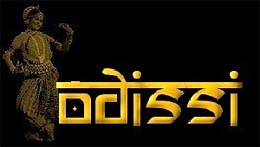
 What is a Mudra?
What is a Mudra? Anuradha's Workshops
Anuradha's Workshops State of Orissa
State of Orissa |
| State of Orissa |
| Written by my dance teacher Sri Vishnu Tattva
In ancient India the temple was the center of learning, culture, religion and art. In Orissa, in north eastern India, in the temple of Lord Jagannath, "Lord of the Universe", religious rituals, music, and dance were combined together to create the highly sculpturesque and devotional dance style, Odissi. According to archeological evidence, Odissi is one of the oldest surviving dance forms of India, dating back to the 1st and 2nd century BC; Mahari legend and oral tradition hold that its origins date back even further. In the Natya Shastra, an ancient text on music, dance, and drama, considered to be the 5th Veda, the sage Bharata Muni describes Odissi as the dance from Odra-Magadhi and Utkal, the traditional names for the region now known as Orissa. The graceful and flowing movements of this art form have been captured in stone in many temple sculptures throughout Orissa. This devotional dance was an intrinsic part of the temple worship. The Devadasis (servants of god/temple dancers), also known as the Mahari in Orissa, dedicated themselves to singing and dancing for the pleasure of Lord Jagganath in the inner sanctum of the temple. Later, the Gotipua (young boys dressed as girls) performed the same art for religious festivals and fairs outside the temple. The basic postures in Odissi, which portray different deities, are chouka and tribhangi. Tribhangi depicts Lord Krishna's three-fold bending form (neck-torso-knees), and chouka, a square and centered stance, depicts Lord Jagannath, the presiding deity of Odissi dance. By combining these basic postures with intricate torso movements, hand gestures, facial expression and elaborate footwork, various stories from ancient texts are brought to life. During the British rule in India, Odissi dance came close to extinction. Due to cultural misunderstanding and insensitivity, the Anti-Nautch Bill was passed which outlawed dance by the devadasis in the temples throughout India. It was only later, in the 1950's, when India gained Independence, that Odissi was slowly revived. It was brought back to its former glory by Gurus of both the Mahari and Gotipua styles, using ancient texts, temple sculptures, and paintings in an effort to reconstruct the dance. Among these experts were Pankaj Charan Das (son of a Mahari), and Kelucharan Mohapatra, Dev Prasad Das, and Mayadar Rout (all of whom were once Gotipuas). Today, though Odissi dance has stepped out of the temple into mainstream society, it continues to inspire and awaken beauty and grace in the hearts of artists and spectators alike. In increasing numbers it is brought to life through dedication and devoted work, allowing it to evolve and thrive as it passes from teacher to student, building a future with ancient history and culture into the new millennium. Maharis of Puri: The Maharis (Maha- Great, Nari- Lady ) were the temple dancers (Deva Dasi) from the Jagannath temple in Puri, Orissa. The Maharis were married to the temple Deity (Lord Jagannath) and only performed the singing and dancing as daily ritual inside the inner sanctum of the temple for the pleasure of Lord Jagannath. According to the Mahari legend and oral tradition its origin dates back to the beginning of creation. In Satya Yuga (4,000,000 years ago) King Indradyumna, built a grand temple for Lord Jagannath. He went to Brahma Loka (Heavenly planet) to invite Lord Brahma for the installation ceremony. Brahma came accompanied by many demigods, great personalities, sages, and celestial dancers like the apsaras (Menaka, Urvasi , Rarnbha) and Gandharvas (celestial musicians). When Lord Jagannath, his brother Balabhadra (Baladev) and sister Subhadra were installed the heavenly singers sang while Urvasi and Rambha danced. It is said that Lord Shiva taught dance to his son Ganesh, who in turn taught it to the apsara Mani Rambha. She taught it to the sage Bharata. The tradition was carried on by Gargacharya, Bikatacharya, Kumaracarya, Rantidev and Attahasa who taught it to the Devadasis or Maharis of Orissa. For more information, visit: www.odissivilas.org © Anuradha Devi, 2007 |
